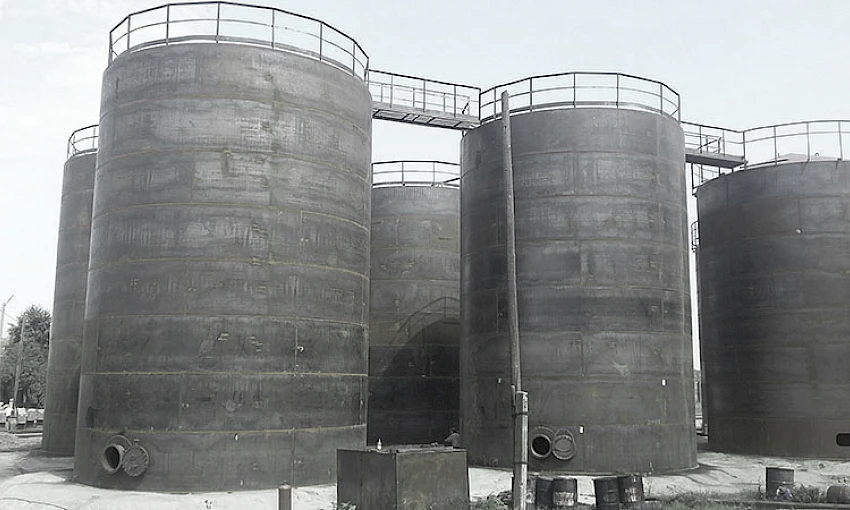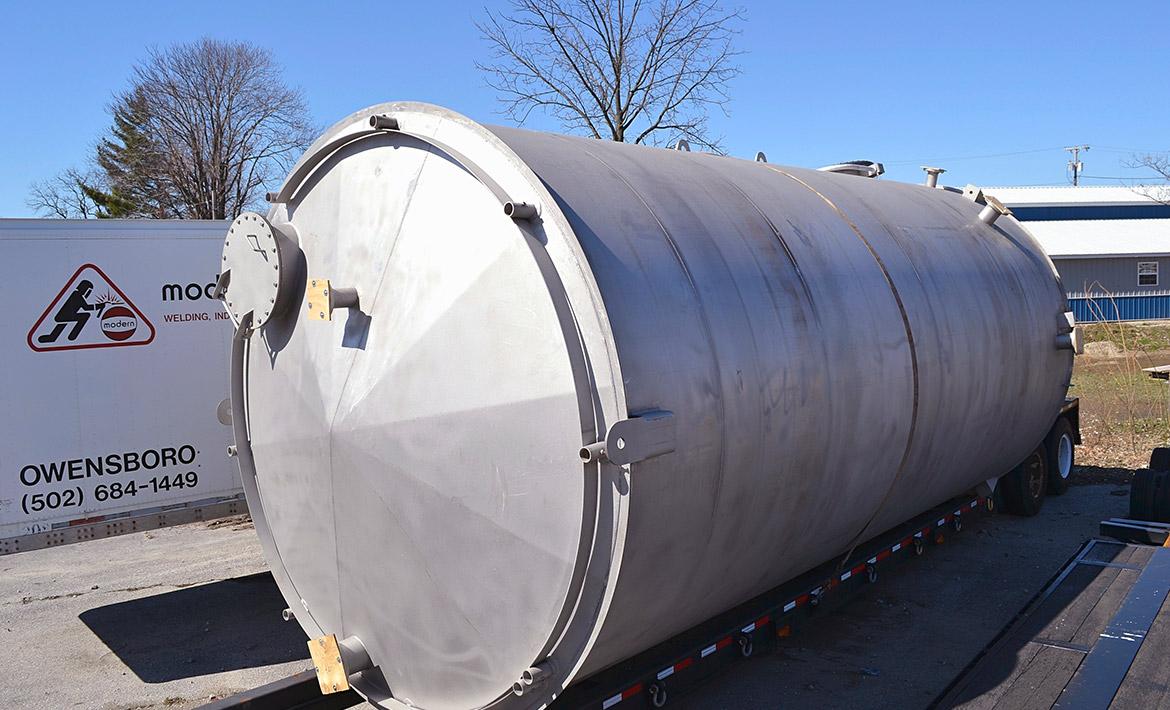Exploring API 650 Welding Inspection Standards for Efficient Industrial Construction
Wiki Article
Everything About Welding Evaluation: Key Advantages for Your Tasks
Welding inspection plays an important role in the building and production markets. It assures that bonded joints meet top quality and safety criteria. By identifying flaws early, projects can avoid significant hold-ups and economic losses. Adhering to industry standards not only secures the integrity of the end product yet likewise constructs trust fund among stakeholders. Understanding the subtleties of this process exposes fringe benefits that can impact project outcomes significantly. What are these advantages?Understanding the Welding Evaluation Process
Although welding is an important part in numerous sectors, the inspection process is necessary to assure quality and security. This procedure involves a collection of organized assessments developed to identify any kind of potential concerns that might endanger the integrity of welded joints. At first, examiners examine welding procedures and certifications to verify conformity with sector requirements.Following this, visual evaluations are carried out to analyze the general appearance and surface of welds. Non-destructive testing techniques, such as radiographic or ultrasonic testing, might also be employed to find inner flaws without harming the material. Paperwork plays a crucial function, as it gives a document of evaluations and findings, confirming traceability and responsibility.
Ultimately, understanding the welding inspection procedure fosters confidence in the high quality of the ended up item, lowers the risk of failings, and enhances general project success in various applications, from construction to production. API 650 Welding Inspection.
Typical Types of Welding Issues
Welding problems can substantially affect the stability and efficiency of welded structures, as they might bring about failings under stress or unfavorable problems. Typical sorts of welding defects consist of fractures, porosity, insufficient combination, and slag addition. Cracks can develop due to thermal stresses or incorrect cooling, jeopardizing the joint's stamina. Porosity describes the visibility of gas bubbles entraped in the weld, which can damage the joint and lower ductility. Incomplete fusion occurs when the weld metal does not correctly bond with the base material, leading to weak places. Slag addition takes place when non-metallic pollutants become entraped within the weld, causing a reduction in architectural integrity. Recognizing these flaws early via evaluation is crucial for keeping high quality and making sure safety in bonded structures. Understanding these common flaws permits improved welding strategies and enhanced project outcomes.Value of Compliance With Sector Requirements
Conformity with sector criteria is vital for preserving structural honesty in welding jobs. Following these criteria not just reduces liability dangers yet likewise boosts the total high quality of the completed work. This alignment fosters count on among stakeholders and guarantees that forecasts satisfy both security and performance assumptions.Ensuring Architectural Honesty
Guaranteeing architectural integrity is vital in any kind of construction or manufacturing task, as adherence to industry requirements acts as a foundation for safety and reliability. Compliance with these requirements assurances that welding processes fulfill rigorous specifications, which is essential for the sturdiness of structures. Normal welding assessments validate that methods and products align with developed guidelines, stopping possible failings that can jeopardize stability. Additionally, complying with industry criteria advertises uniformity in high quality, which is vital for preserving public count on construction methods. By prioritizing structural integrity with thorough adherence to requirements, organizations can improve the total performance of their tasks, resulting in much safer settings and prolonged possession lifespans. Eventually, this commitment shows a positive approach to top quality guarantee in welding methods.Reducing Responsibility Dangers
Following market requirements considerably reduces liability dangers associated with welding jobs. Compliance with established standards guarantees that welds satisfy safety and performance standards, decreasing the probability of failures that might cause accidents or lawsuits. This proactive technique not only protects the labor force yet likewise safeguards the financial rate of interests of the firm. Second-rate techniques or inadequate inspections can lead to costly repairs, lawful disputes, and damage to online reputation. By executing strenuous welding assessments, firms show their dedication to high quality and safety, ultimately minimizing exposure to potential claims. On top of that, adherence to regulations strengthens depend on among stakeholders and clients, as it indicates a dedication to preserving high standards throughout the task lifecycle. Decreasing obligation dangers is essential for long-term organization sustainability.Enhancing Task Top Quality
Strenuous welding assessments not just alleviate obligation risks however also play a pivotal duty in boosting general project top quality. By sticking to market requirements, these evaluations assure that welds fulfill specified standards for security, strength, and longevity. Compliance with developed guidelines aids identify issues early, decreasing the possibility of pricey rework or job hold-ups. Furthermore, regular high quality control fosters trust fund among stakeholders, consisting of clients and regulative bodies, which can lead to repeat organization and positive recommendations. Eventually, a dedication to premium welding techniques not only enhances the honesty of the end product yet additionally upholds the reputation of the company entailed. Thorough evaluations serve as a foundation for effective and lasting task outcomes.
Advantages of Early Detection of Issues
Early detection of welding problems uses considerable benefits, particularly concerning expense savings on repair services. By determining issues before they intensify, companies can improve the architectural stability of their jobs. This proactive method not just lessens monetary expenditures but also advertises safety and security and dependability in welded structures.
Cost Savings on Services
Identifying welding concerns immediately can result in significant cost financial savings on repair services. Early identification of defects enables targeted interventions, decreasing the extent of damage and protecting against expensive, substantial repair services in the future. When problems are addressed throughout the initial stages of a job, resources are made use of much more efficiently, lowering both labor and material expenses. Additionally, prompt examinations can stop project hold-ups, which typically incur additional costs. By correcting concerns early, business can prevent the monetary worry connected with rework, warranty insurance claims, and potential security threats. Eventually, purchasing positive welding inspections promotes i loved this an extra affordable strategy to project monitoring, ensuring that budget plans continue to be intact while preserving the top quality and reliability of the end product.Improved Architectural Integrity
Guaranteeing the architectural honesty of bonded parts rests on the timely identification of possible concerns. Early detection during the welding assessment procedure allows for the instant correction of problems such as splits, voids, or improper combination. Addressing these problems promptly not only enhances the strength and longevity of the weld but also reduces the danger of disastrous failures throughout the solution life of the framework. Regular examinations contribute to a much more dependable evaluation of weld high quality, ensuring conformity with market standards. By focusing on welding examinations, project supervisors can keep a higher level of security and efficiency, eventually leading to successful job outcomes. Enhanced structural honesty shows the commitment to top quality and adherence to ideal techniques in welding.Cost-Effectiveness of Welding Inspections
While lots of business might watch welding assessments as an extra expense, they typically confirm to be a cost-effective financial investment in the long run. By identifying defects early, these examinations can protect against costly repair work or replacements that may develop from undetected problems. This positive technique not just conserves cash however also minimizes project hold-ups, making sure that timelines are stuck to.
Top notch welding evaluations add to enhanced effectiveness, leading to less rework instances and boosted efficiency. The reduction in product waste and labor costs related to remodeling malfunctioning welds includes in the monetary benefits.
Investing in extensive examinations also boosts the total quality of the end product, which can cause enhanced client complete satisfaction and repeat service. Eventually, the first prices linked with welding assessments are often surpassed by the long-term savings and advantages they give, making try this them a sensible option check my blog for any welding task.
Enhancing Security and Integrity in Welding Projects

Welding examinations play an important role in enhancing security and reliability within welding projects, as they methodically recognize prospective hazards and weaknesses in welds. By employing certified inspectors, organizations can assure that welding procedures stick to market standards and regulatory requirements. This proactive approach decreases the threat of weld failures, which can bring about crashes, pricey repairs, and job hold-ups.
In addition, evaluations provide essential documentation that shows compliance and quality control, cultivating trust fund between stakeholders. Regular assessments during numerous project stages enable the prompt discovery of problems, allowing corrective actions prior to they escalate. Furthermore, the insights got from inspections add to continual enhancement in welding practices, boosting total project results. Inevitably, robust welding inspection methods not only protect employees yet likewise safeguard financial investments, guaranteeing that tasks are completed successfully and meet the highest safety and dependability standards.
Frequently Asked Questions
What Credentials Should a Welding Examiner Have?
A welding inspector should possess appropriate qualifications, such as Certified Welding Examiner (CWI), together with comprehensive expertise of welding processes, products, and codes. API 650 Welding Inspection. Experience in the area and strong analytical abilities are likewise essential for effective assessmentsHow Commonly Should Welding Inspections Be Carried Out?
Welding examinations should be conducted on a regular basis, usually before, during, and after the welding procedure. The regularity might rely on task specs, regulative requirements, and the intricacy of the welds to assure architectural integrity and safety.Can Welding Inspections Be Done Remotely?
Welding examinations can without a doubt be performed from another location, utilizing innovative innovations such as drones, video cameras, and ultrasonic screening devices - API 650 Welding Inspection. This approach allows for effective monitoring while decreasing the demand for physical visibility at the siteWhat Tools Are Made Use Of in Welding Inspections?
Welding evaluations make use of different devices, consisting of ultrasonic testers, magnetic particle testers, visual assessment devices, radiographic equipment, and calipers. Each device offers a certain objective to ensure weld stability, top quality, and conformity with sector criteria.How Do I Choose a Welding Inspection Service?

To pick a welding examination solution, one should review qualifications, experience, and certifications. In addition, examining client testimonies and asking for thorough solution descriptions can help guarantee the selected service meets certain job requirements successfully.
By focusing on welding assessments, task managers can keep a greater degree of safety and security and performance, ultimately leading to effective job results. Welding assessments play a vital role in boosting safety and dependability within welding projects, as they systematically identify possible risks and weaknesses in welds. A welding assessor must possess relevant accreditations, such as Licensed Welding Assessor (CWI), along with extensive knowledge of welding materials, codes, and processes. Welding assessments must be performed on a regular basis, generally in the past, throughout, and after the welding procedure. Welding evaluations use numerous devices, consisting of ultrasonic testers, magnetic particle testers, visual examination tools, radiographic devices, and calipers.
Report this wiki page